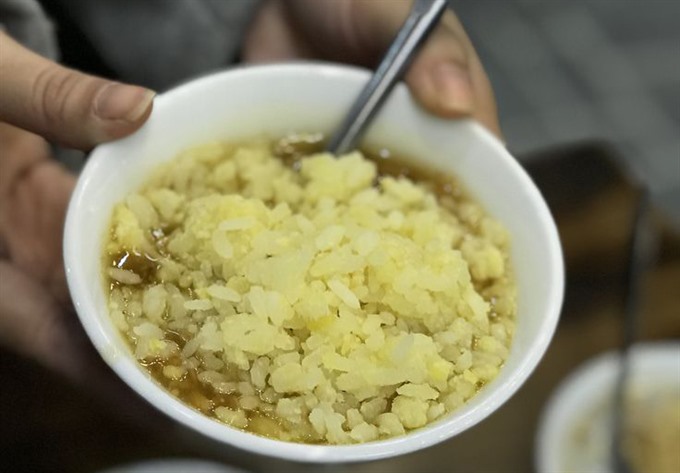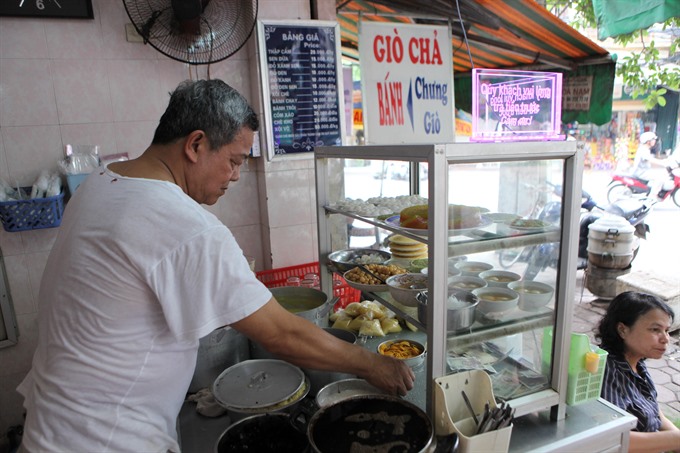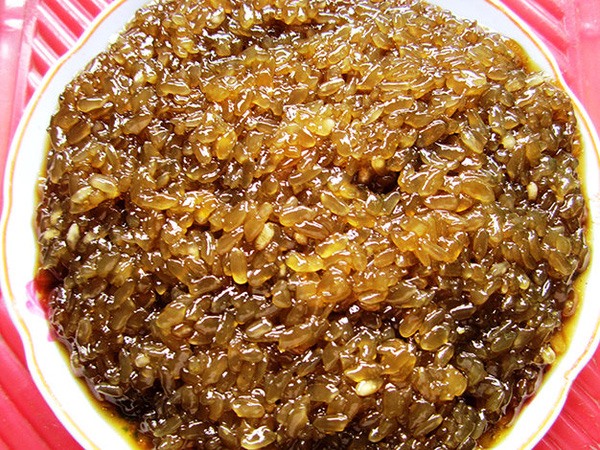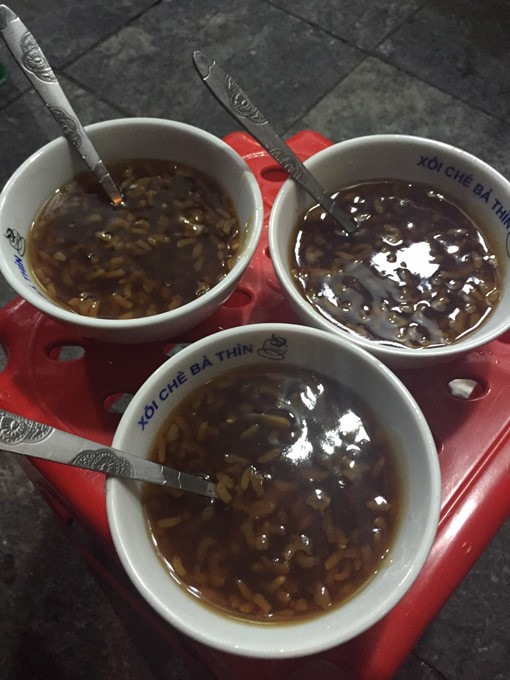 Life & Style
Life & Style

Vietnamese cuisine includes many types of chè (pudding) such as chè bà cốt (pudding made of glutinous rice, ginger, and sugar) and chè con ong (bee-shaped pudding).
 |
| Delicious: Hà Nội is not only famous for its street food but also chè bà cốt eaten with xôi vò (sticky rice). — VNS Photos Trương Vị |
By Hà Nguyễn
Vietnamese cuisine includes many types of chè (pudding) such as chè bà cốt (pudding made of glutinous rice, ginger, and sugar) and chè con ong (honeycomb-shaped pudding).
These chè dishes play an important role in Vietnamese culinary history, said a juror of the Việt Nam Master Chef Programme, food expert Phạm Tuấn Hải.
Women in the northern midland province of Phú Thọ still maintain the tradition established by their ancestors: preserving glutinous rice seeds (locally known as nếp cái hoa vàng) that are fragrant and soft. They grow them in order to have glutinous rice to cook chè con ong — called “honeycomb-shaped pudding” because the dish’s grains of rice resemble a hive of bees.
Local Nguyễn Thị Miền, 67, said: “When a newborn baby arrives in a family, his or her grandmother often cooks the dish to worship mụ, the goddess believed to give shape to and protect babies.”
The dish could not be missing from a locally family’s tray on the occasion of the first and middle days of the lunar month, particularly at the Tết (Lunar New Year) holiday, Miền said.
To cook tasty and delicious chè con ong, her mother had to soak one kilogramme of sticky rice in warm water for five to six hours before steaming it for half an hour and then letting it cool.
“I will never forget the fragrant smoke of new glutinous rice spreading out from an earthen steamer,” she said, noting that unlike in other areas where people use white sugar to cook the chè, Phú Thọ Province’s Phù Khê villagers cook the dish with molasses.
“I still remember that when autumn is approaching, locals never forget to buy several kilogrammes of molasses (often in a rectangular shape) to use it for cooking chè,” Miền said, adding that cooking the dish requires a great deal of care.
“We have to cut the rectangular molasses block into pieces and put them into a pot fire and stir it well until it is melted and fragrant before putting the steamed glutinous rice in the pot and stirring it well for nearly 20 minutes so they mix all together until it turns into a light brown colour, and then is done,” she said.
One critical ingredient is ginger.
“My mother used to pull up an old ginger tree in our garden, asking me to clean and grind into it pieces for her to put it in the chè pot and stir it well. The peppery flavour of ginger helps the dish become tastier, attracting every diner,” Miền said.
Kinh people in the northern province of Bắc Kạn’s Chợ Mới District are also famous for their chè con ong.
An official from the district, Nông Ích Nguyên, said the chè has high nutritional value and it carries the spirit and beliefs of the Kinh (Việt Nam’s majority people) from thousands of years.
The Kinh in Chợ Mới consider the fifth lunar month’s fifth lunar day as the day to go out to their fields and kill insects which are damaging crops. As part of the ritual surrounding this practice, they place a big plate of chè con ong among different kinds of fruits to worship their ancestors, praying for a bumper crop.
“Local housewives also cook this kind of chè for the Tết festival where all family members gather to welcome the country’s biggest holiday,” said Nguyên, adding that nowadays not only Kinh people but also other ethnic groups such as the Tày and Nùng in the district have joined in to maintain and preserve the dish.
Meanwhile, Hanoians can enjoy these two types of chè at many chè shops across the city. One of them is Bà Thìn’s shop in the Old Quarter which has been a favourite address for chè lovers for nearly a century.
Thìn’s maternal grandchild Nguyễn Thị Giang said: “My grandmother has sold the dish since 1930s. She handed the job down to my mother and me nowadays.”
Despite the ups and downs, Thìn’s shop still carries her name and is always crowded in hot or cold weather.
Long-time customer Trần Thị Ngọc said that in winter she has to wait for more than 15 minutes to have a bowl of chè bà cốt mixed with glutinous rice cooked with split peas.
“I enjoy it so much because it helps to warm up my body and my mind. I feel quite healthy after eating the dish.”
Ngọc said the chè is not so sweet, but it still has a strong flavour. The glutinous rice is soft but still holds its form. The fragrance from the bowl of chè is durable until the last spoonful.
Apart from chè con ong and chè bà cốt, Thìn’s shop sells many other types of chè such as chè sen (lotus), chè đỗ xanh (green bean), chè đỗ đen đặc (condensed black bean) and other varieties to meet evolving demands, said Giang. — VNS
 |
| Time for sweets: A corner of the famous chè shop at 16 Ngô Thì Nhậm Street in Hà Nội. |
 |
| It won’t sting: Chè con ong (honeycomb-shaped pudding) attracts not only locals but also foreign tourists. |
 |
| Spicy-sweet: Chè bà cốt (pudding made of glutinous rice, ginger, and sugar) of Bà Thìn in Hà Nội is another famous address for chè lovers in and outside the capital for nearly a century. |









